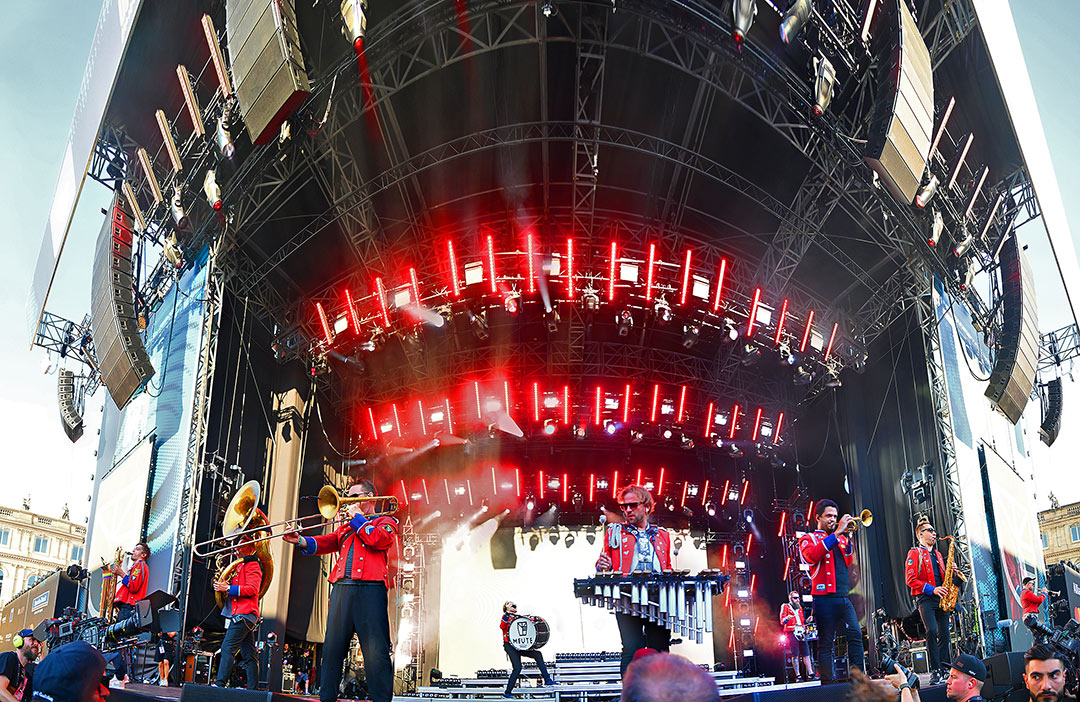Would you like to spend two days of full immersion at d&b audiotechnik in Germany? If so, just follow along with us here. The programme is intense and very interesting, starting with a concert at the Jazzopen festival in Stuttgart to experience the benefits of Soundscape spatialised audio.
This was followed by a highly informative discussion with the product management department, a tour of the manufacturing facilities, presentations on the brand’s vision and sustainable development, all culminating in an obviously compelling demonstration of the advantages of spatialisation as seen by d&b. All set? Let’s get started.
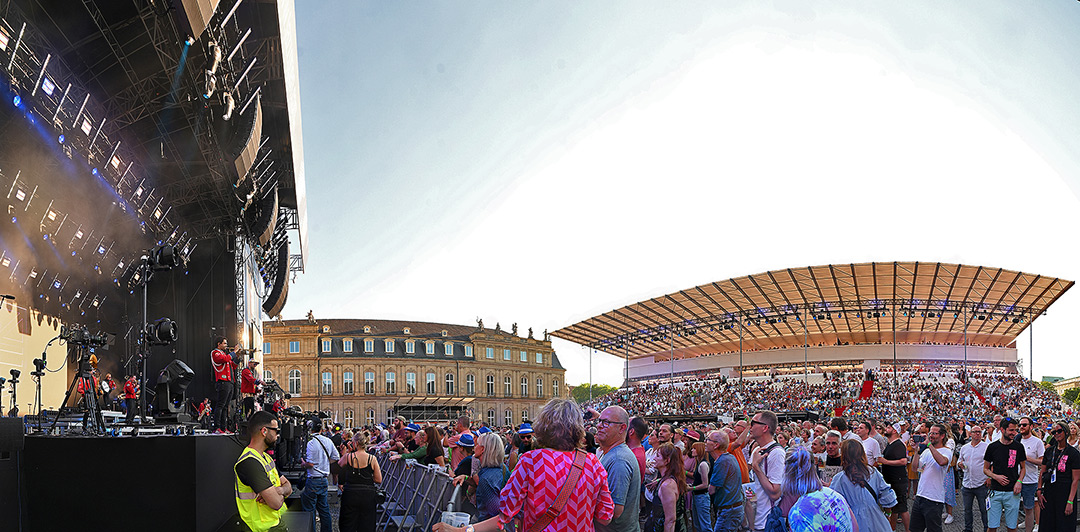
d&b is a long-standing partner of the Jazzopen festival, held every year in downtown Stuttgart. This year, to celebrate the 30th anniversary of the festival, a series of 16 concerts was organised on a stage set up at the back of Schlossplatz and surrounded by imposing buildings. Suffice it to say that the location is conducive to a lot of reflections, so it’s best not to overstimulate the surroundings.
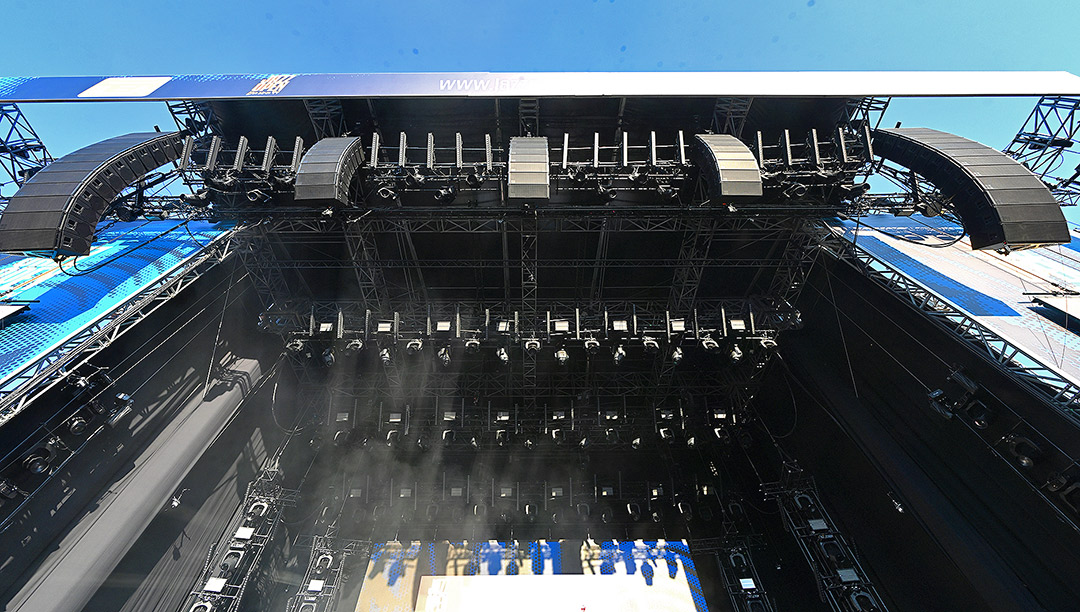
The stage was equipped with a Soundscape spatialised sound system flown from the stage structure, comprising five vertical arrays, two of which had more enclosures, to satisfy the needs of the traditional left/right configuration. This was complemented by a delay line for the stands, a front-fill system and a sub array, all driven by the DS100 processor.
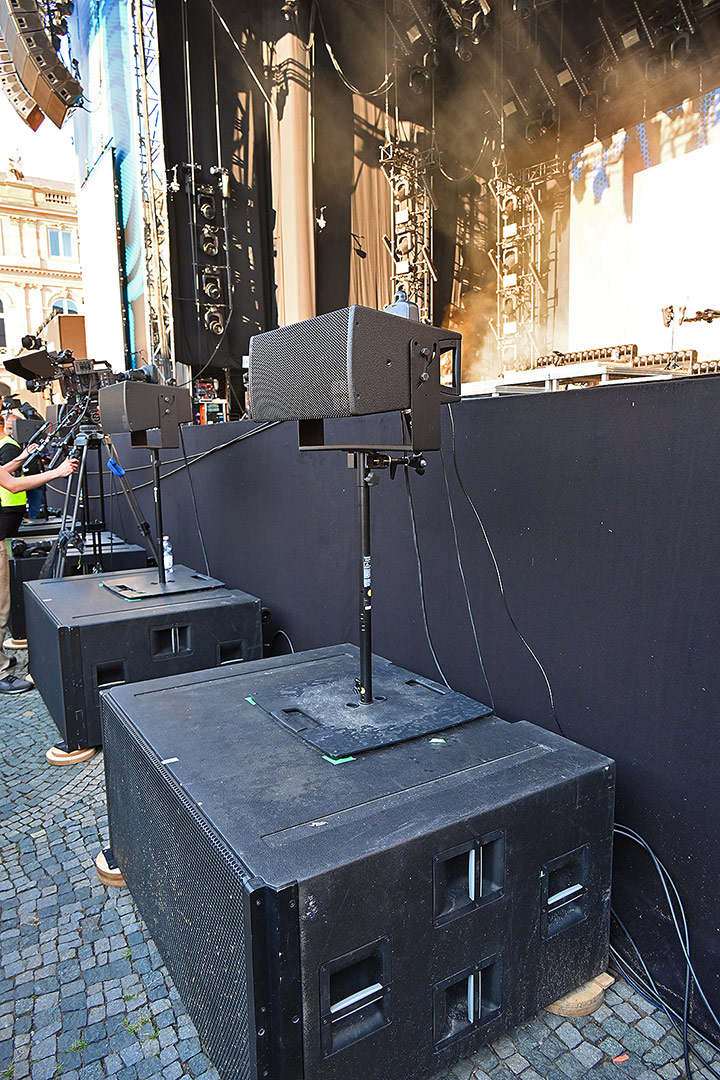
We start off at a concert by Meute, a modern marching band tinged with electro sounds and arrangements, whose particularity is having many musicians in constant movement.
A wealth of timbres and a highly dynamic stage performance that favoured the use of spatialised sound reinforcement, as Dominic Grimm, application support for d&b, explains.
“It’s a tremendous advantage having a Soundscape system here. In a stereo setup at home, you sit in the middle of your speakers, and everything is perfect. At a festival like this, where you are almost certain never to be in the middle, with a left/right or stereo system you will only hear a truncated sound image. That’s the problem. Normally, for this type of festival with a large audience, we don’t use stereo, but two mono systems.
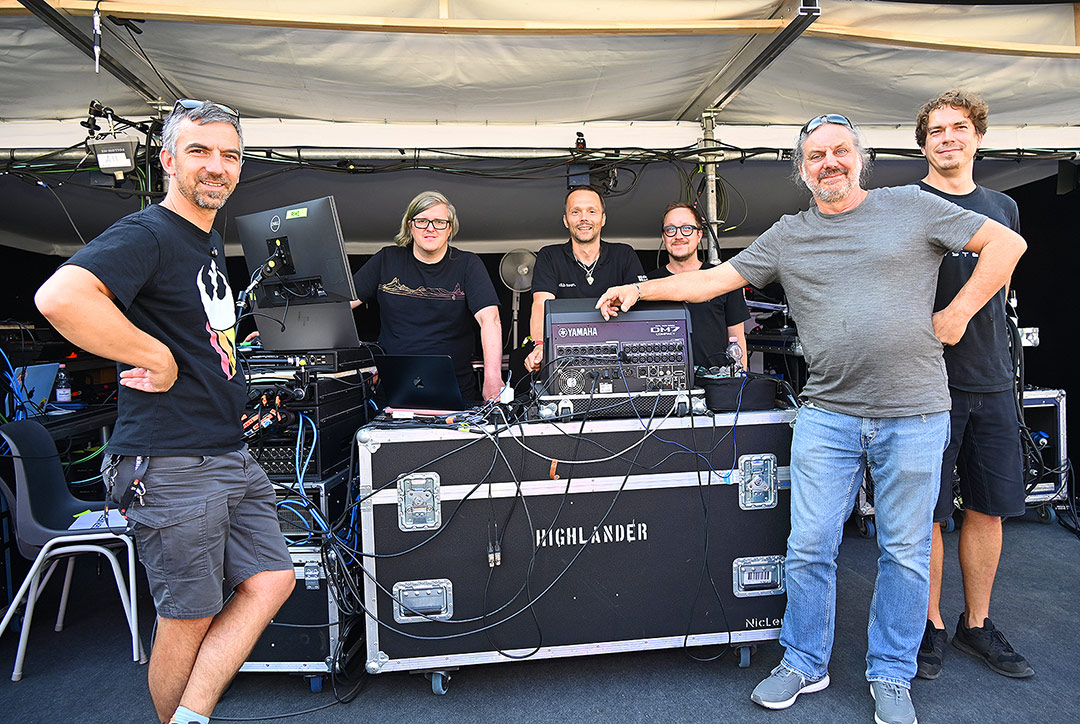
With Soundscape, we’re able to move into something different. Everything the spectator sees on stage can be heard and localised perfectly, regardless of where he or she is positioned. We can finally offer the same emotional experience to the whole audience, in harmony with the artistic activity on stage.”
Manually following the constant movement of the musicians in the object mix would have been impossible. Fortunately, a tracking system is available. As a result, the audience can enjoy a sound image that is continuously visually synchronised with the movements of the musicians (who don’t hesitate to play out in the audience) for a creative and comfortable listening experience.
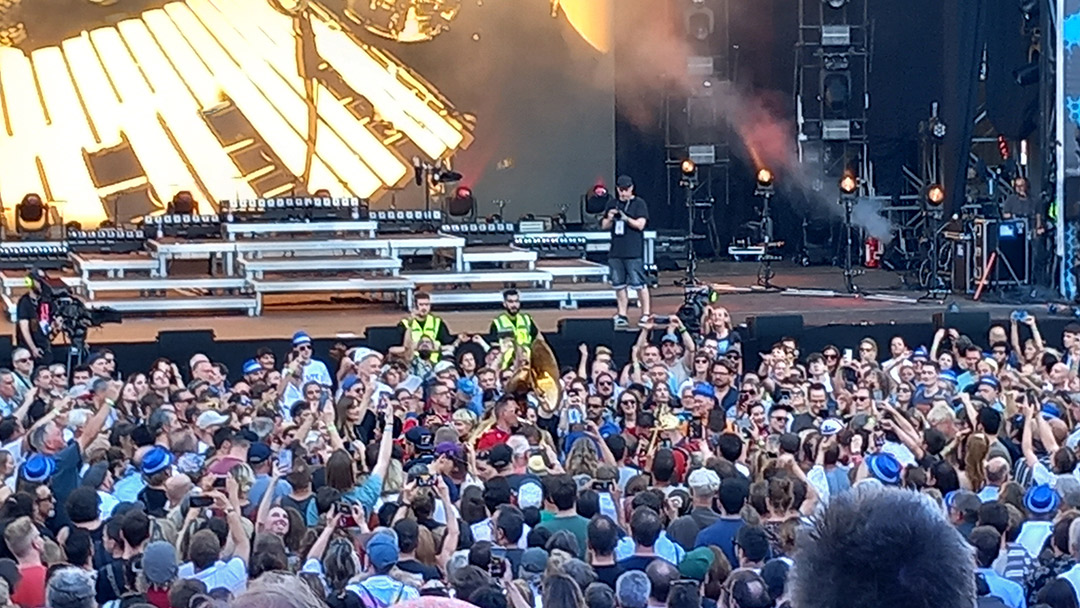
“The result is a much more powerful experience than usual. It’s more emotional than technical. The sound engineer’s job becomes much more creative. You can tell technicians about the Soundscape system, but until they use it, they can’t imagine it. If they listen to it or work with it, they won’t want to go back.”
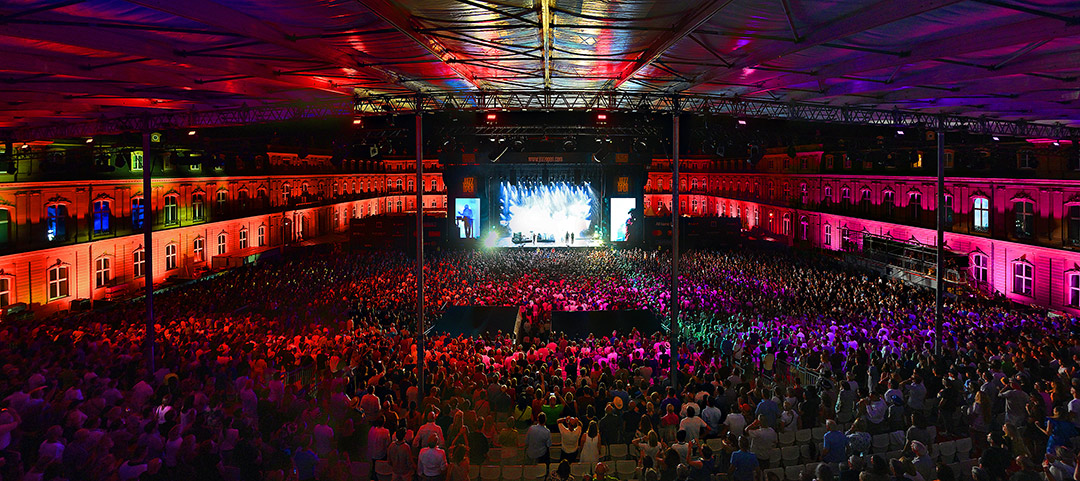
Two of the five arrays that formed the main system were configured in left/right mode to accommodate productions that didn’t wish to make use of spatialisation. While the sound was obviously of high quality, it was not the same for everyone and it would be better to be in the centre to take full advantage of the sound image.
It was difficult to perceive the difference in sonic impact between the two concerts, with very different performances. However, the spatialised sound seemed to be much more precise, probably because the acoustic energy generated less interference, because it was delivered by more than two arrays. The result was a sensation of identical sound volume, but with less acoustic pressure exciting the surrounding buildings, and therefore much more comfortable to listen to.
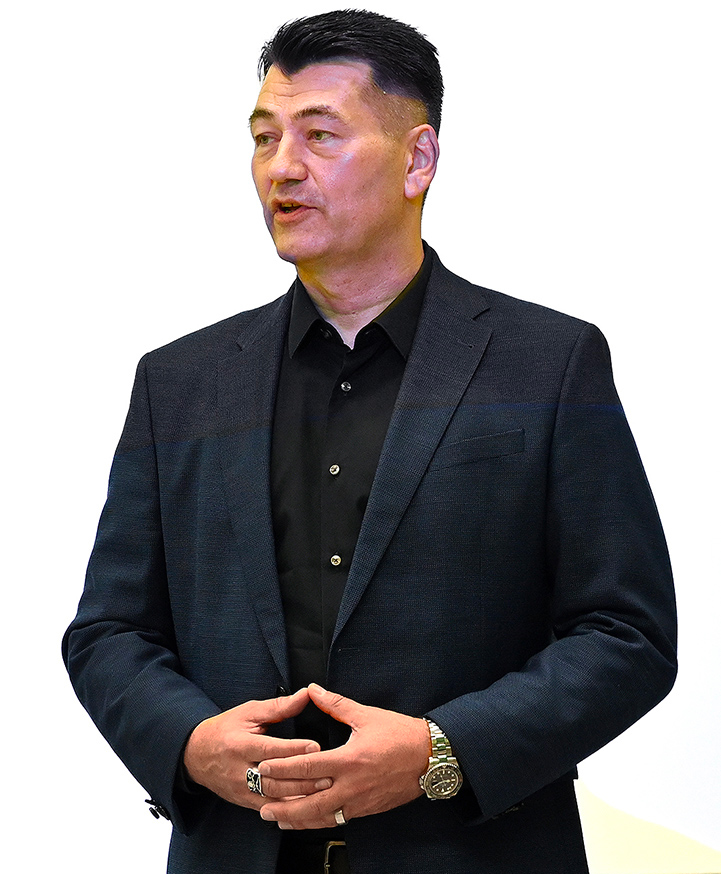
The next morning, we met up at the d&b headquarters in Backnang, a few kilometres from Stuttgart. After it was founded in 1981 by Jürgen Daubert & Rolf Belz in a humble garage, it was here that d&b relocated in 1989 with 20 employees on 800 m² of floor space. Today, d&b employs 1,000 people worldwide. As we’ll be seeing later in the story, the factory has expanded.
We are welcomed by Stephan Greiner, the COO of d&b. “We’re very proud of how far we’ve come. Here in Backnang, we develop and manufacture all our systems. It’s from here that all our products go out to our customers all over the world. Wherever you can picture high-quality sound systems, you’ll find d&b.”
This strong presence of d&b in the Touring sector may distort the perception of the brand’s product range. However, installed audio has always been in d&b’s DNA. “We have a clear strategy for developing our range in our two markets, touring and permanent installation. The integration of spatialisation into d&b’s sound systems applies to both markets. The development of immersive sound is obviously linked to artists integrating spatialisation and immersive sound into their productions.
It’s a new experience for them. Artists have the imagination to create their own vision of how to use this technology. They can access three dimensions and directly create with this type of system in mind. As you can see, spatial sound is at the heart of d&b’s developments. But using it means changing people’s habits.
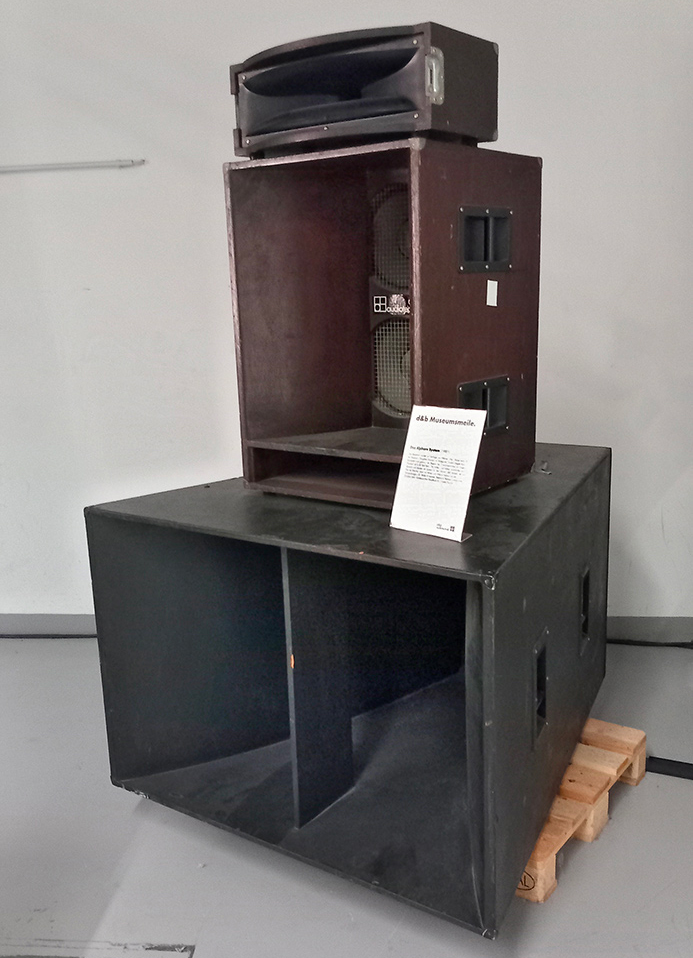
“The story is always the same… We listen to music. But we have been conditioned by stereo for many years. The idea of spatialised sound is to bring it back to its natural level and provide an exact sonic representation of what the listener sees. That’s the basic idea that started it all and that’s what we’re still working on.”
“The Soundscape system has already been installed in many venues around the world, but it still seems difficult to imagine standardisation. The successful development of spatialised solutions seems to depend not only on the technicians who install them, but also on the consultants who will have to master this technology to propose it.”
“Hearing is believing, and it’s the best way to understand what our technology can deliver. Those who specify our products need to be aware of their capabilities to recommend them. We address everyone by asking them the same question: what are the requirements for your project, your event, your concept?”
“Soundscape is much more than a product. First of all, it’s a range of products that we can use in lots of different formats, through software options that solve sound problems or challenges that conventional systems can’t, while maintaining audio quality regardless of conditions. It’s a system, a philosophy, a brand, a solution, a mix of it all.”
Talking strategy
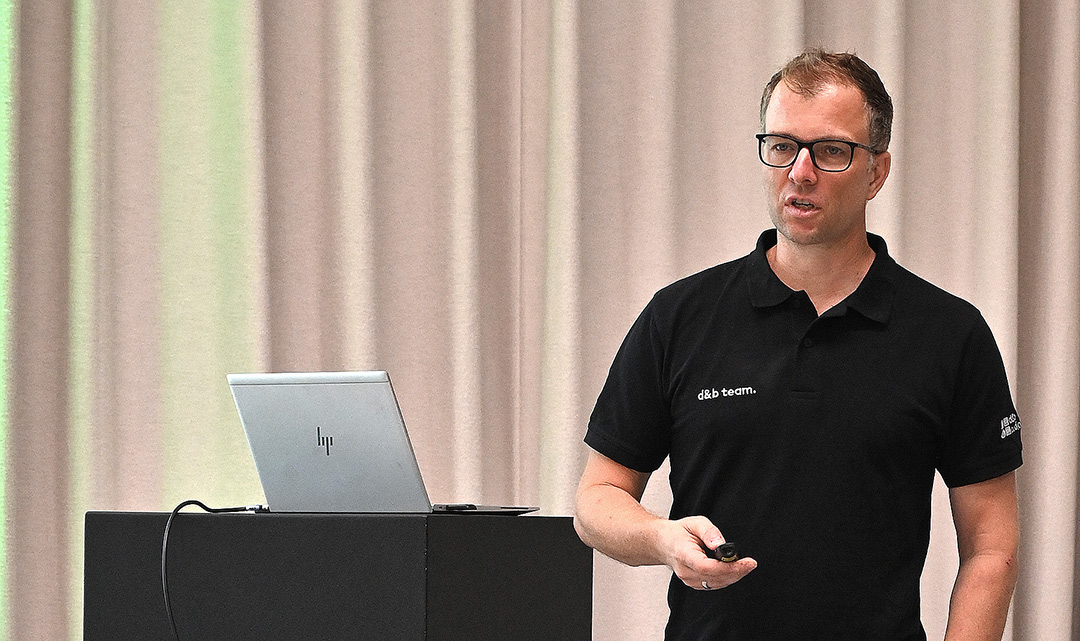
After this discussion, which sheds more light on the objectives and philosophy that d&b intends to implement over the coming months, we return to the product development team with Sebastian Schubnell, Vice-President in charge of product management, who explains the strategy.
“Our product development strategy is built around five major axes, which we will outline for you. These give us the framework for creating our new products. The focus of our next innovations will be on audio networks and immersive sound.”
1. System efficiency – “It’s not just about the electro-acoustic efficiency of our products, for which we are renowned, but it also involves the complete mechanics, its deployment and transport capabilities, overall performance and ESG improvement through energy management.”
2. Improved workflow – “Our software tools are the key to facilitating the transition from planning to deployment. Array Calc and R1 have been developed to produce perfect predictions and optimise the operation of the system by reducing set-up time, enabling monitoring during operation and proposing adjustments according to weather conditions and audience.”
3. More art, less noise – “This means controlling directivity across the entire bandwidth. The challenge at low frequencies is always a complex one. That’s why we use cardioid technologies. We also need to control the energy directed towards the audience and, with our NoizCalc software, we offer a tool that is unique on the market for predicting sound emissions into the surrounding area.”
4. Audio networks – “This is a key point this year. Now is the time to create an ecosystem, the backbone of our installations.”
5. Immersive – “It’s an obvious choice. We’re focusing all our efforts on immersive solutions.”
This strategy is applied to several software developments that are already available, including the Headroom Calc technology, which, in the prediction software, provides a very precise result for the sound pressure level and the headroom, thus limiting the risk of last-minute changes to the event.
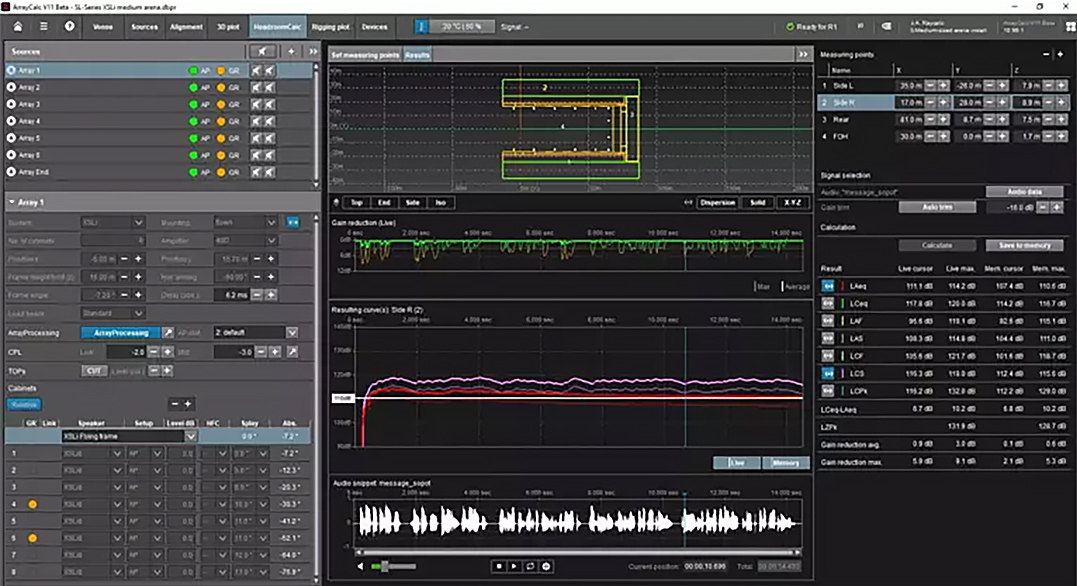
“With En-Space, we have the foundations to enable the duplication of room acoustics in different venues. We plan to offer customisable solutions, so we can provide a real service to meet specific needs.”
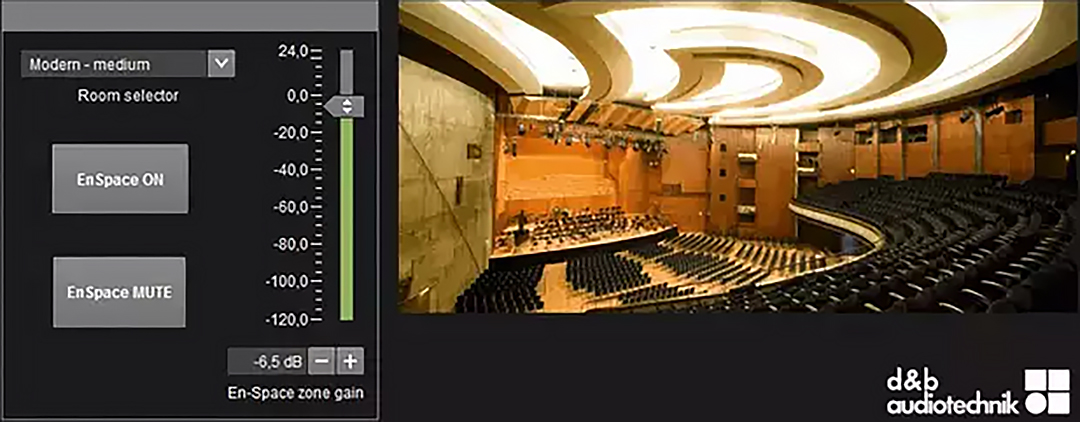
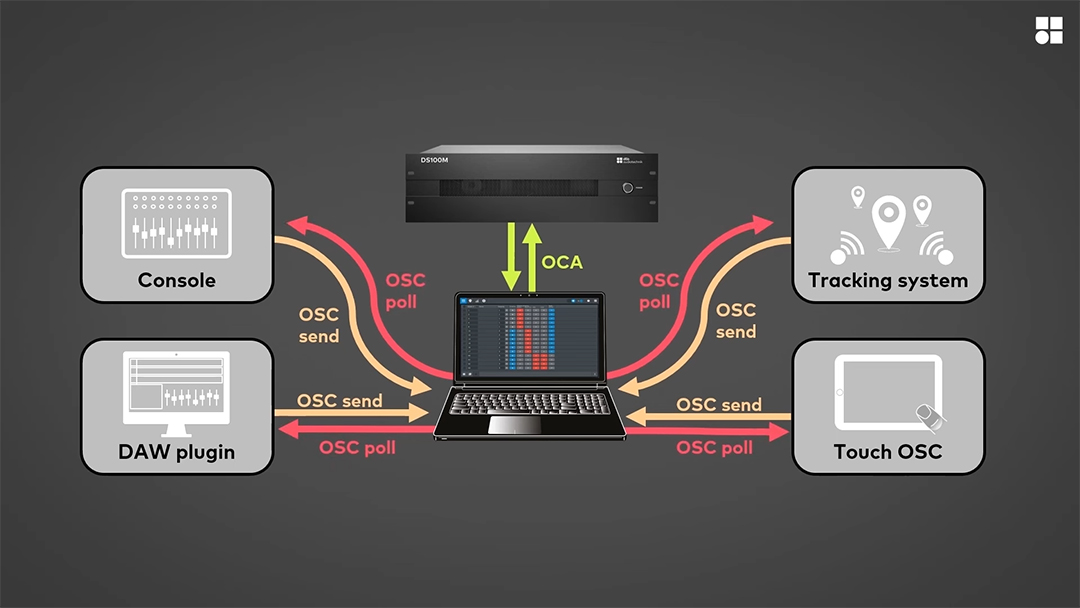
The En-Bridge software greatly simplifies the workflow of sound systems for complex events, by facilitating the interoperability of the Soundscape system with third-party systems, including tracking systems, consoles and plug-ins, as well as generic OSC controllers.
The software package is completed by En-Snap, the product of the collaboration between d&b and Gareth Owen Sound. It enhances the system’s control and automation capabilities, giving designers a stand-alone user interface for controlling a Soundscape-based show, and of course the ArrayCalc simulation software.
The integration of the MILAN network interface is a key feature of new hardware products. This is evident in the DS20, which was the first d&b network bridge to implement the protocol for operating a d&b system in a MILAN environment.
“We chose the MILAN network to be the backbone of our new systems. In a touring environment, we think the MILAN network is simpler to manage. It’s totally plug-and-play and requires less IT expertise to set up. It’s a more open and autonomous protocol. Nevertheless, there are still many cases where Dante is a perfect solution. By giving our customers this choice, we are preparing for the future.”
To maximise the potential of the MILAN network, d&b and L Acoustics have joined forces to develop the MILAN Manager control software. “It makes sense for us to work with L Acoustics to develop MILAN Manager, the tool that the whole profession needs. We’re not looking for individual benefits because the purpose of this controller is to develop MILAN eco-systems.”
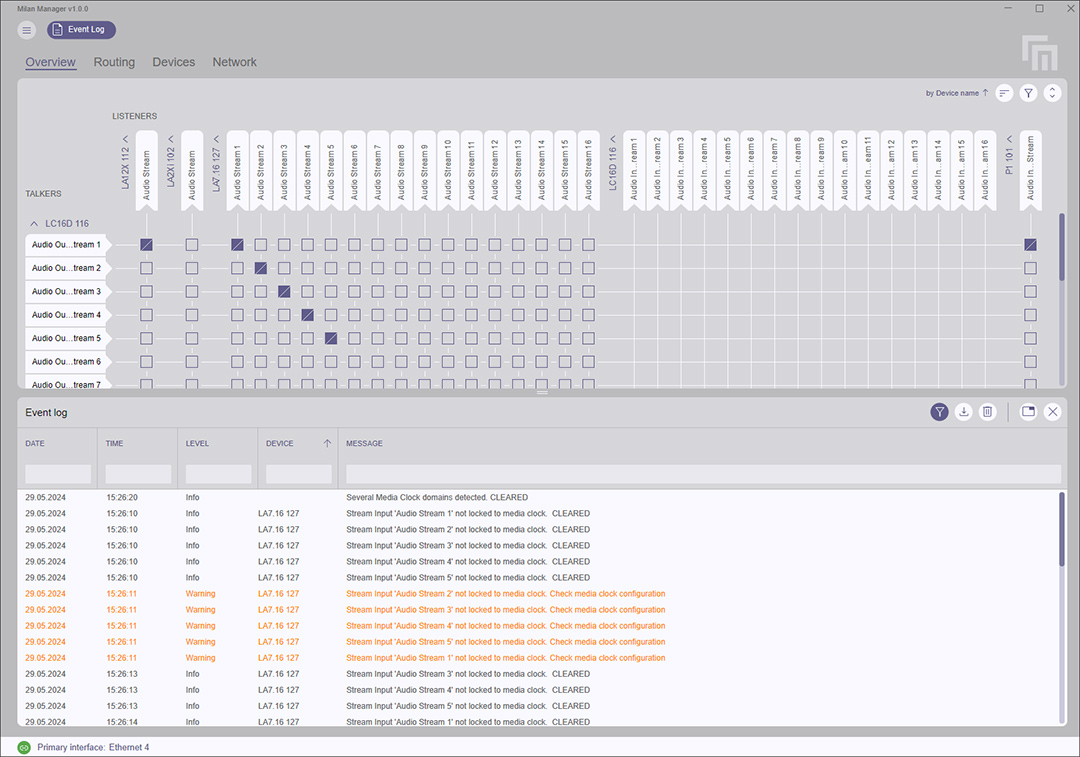
So MILAN is now a feature of d&b hardware. This includes the new DS100M processor, which incorporates MILAN connectivity, supplemented by a 128-channel MADI interface and word clock.
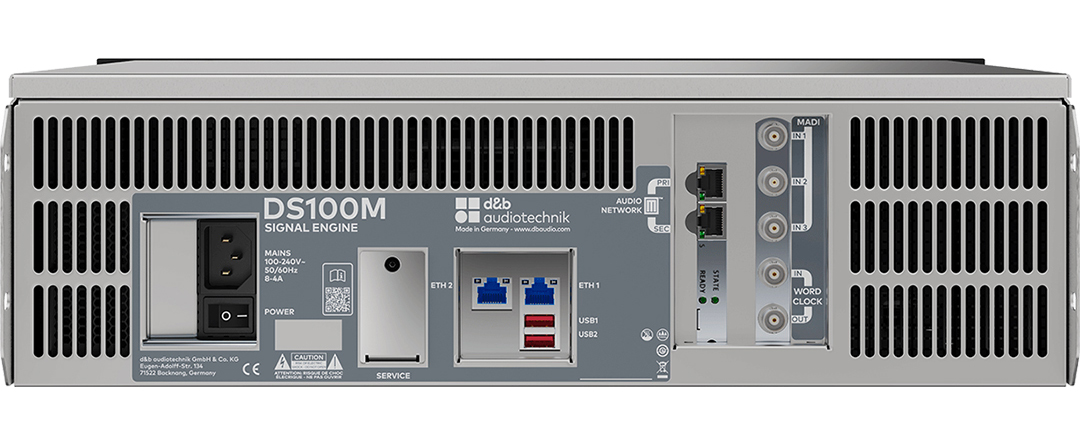
“The DS100M is also equipped with a new internal processing architecture. This will allow us to offer a modular and upgradeable version in the future because, as you can imagine, the development of our Soundscape system will lead to new and different requirements in terms of inputs and outputs.”
The same goes for the new D90 amplifier, which replaces the well-known D80 that has been in service for over ten years. It also features an integrated MILAN interface and a new DSP platform. Eventually, all our amplifiers will be MILAN-compatible.

“In 2025, we will concentrate on launching new speakers and immersive solutions, focusing on the user interface, handling, new software features and customisation capabilities. That’s our programme for the coming year. It will be very exciting, I promise.”
As one of the world leaders in our industry, the d&b Group is fully committed to sustainable development. All the company’s activities are monitored externally and are totally transparent. For this reason, a dedicated sustainability department has been set up. Robert Trebus oversees this department and gives us an introduction to it.
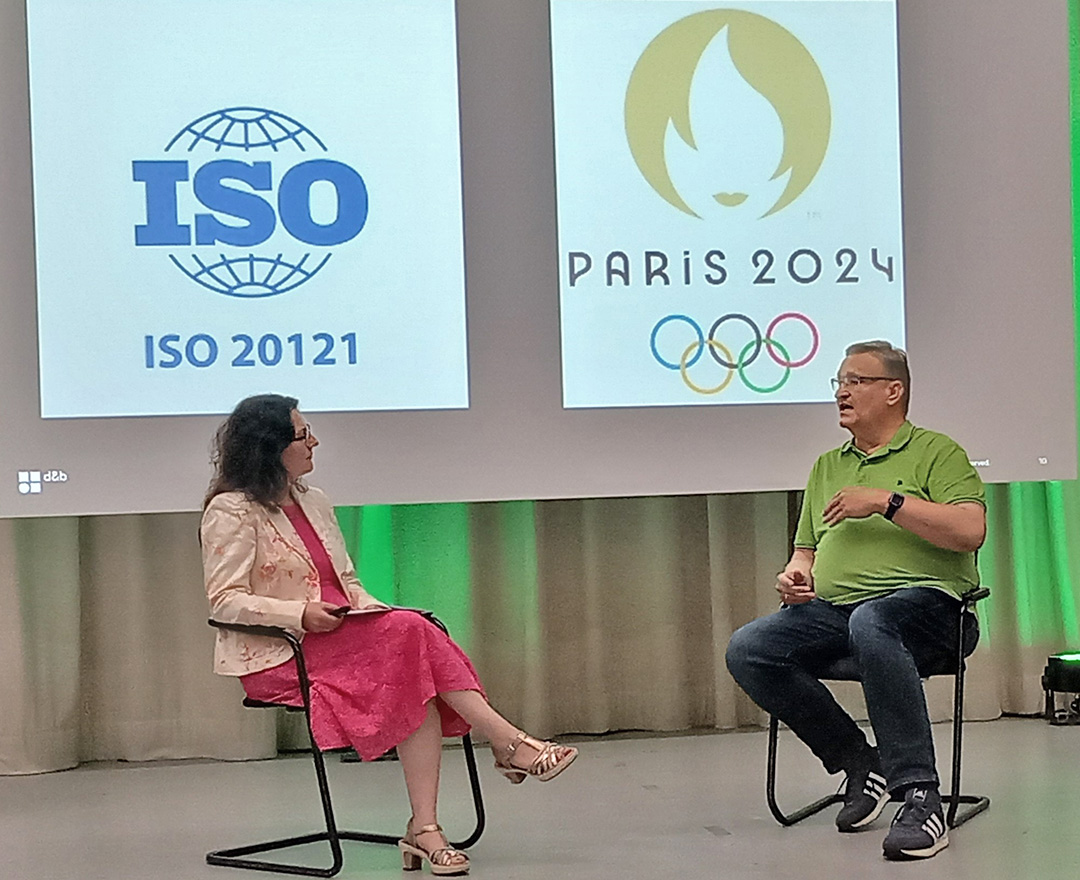
“Sustainability is a long-term process, with a management system that helps improve performance. It is essential to continually measure our operations and strengthen our strategies to achieve our goals. This work on sustainability has been going on for more than 20 years.”
The concept of sustainable development naturally applies to everyone involved in the organisation of events. The new ISO 20121 standard, used for the first time at the Paris 2024 Olympic Games, provides a framework for this approach.
This applies to all types of events, regardless of size, and encourages organisations to manage the social, economic and environmental impact of an event responsibly. It’s a set of guidelines for managing events responsibly. It helps organisations to seamlessly integrate sustainability principles into all aspects of the planning and execution of their events.
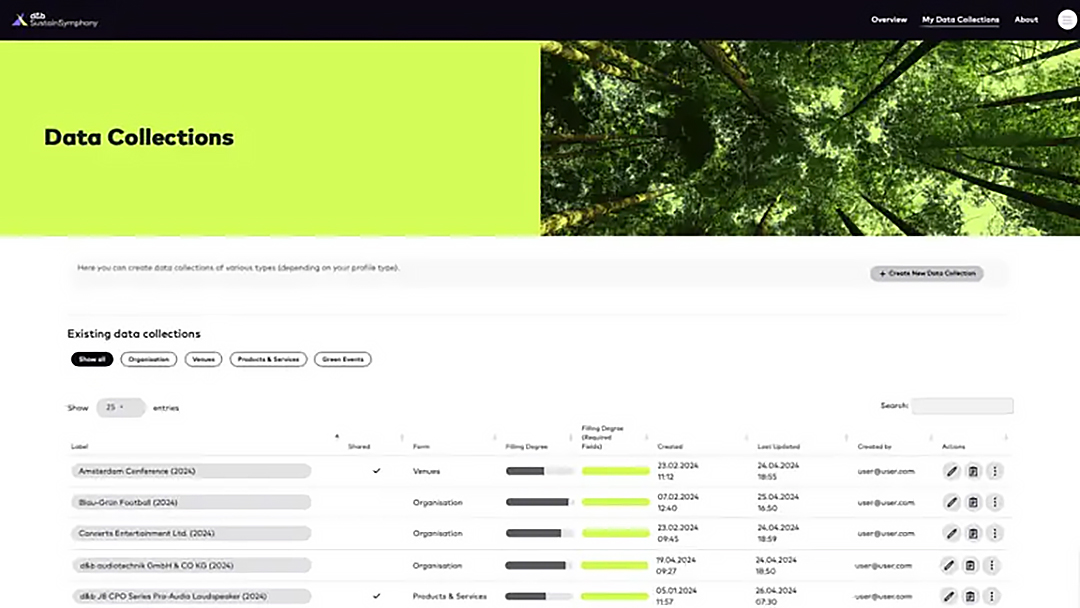
“To facilitate this process for our employees and customers, we have created a software tool called SustainSymphony. The data collected for events is very specific, and this software enables us to collect it in a specific way, and to analyse it and check our strategy. It’s free to use and very straightforward.
It respects the aspects of an event and the categories that correspond to our industry. We hope it will encourage events companies to integrate the concept of sustainable development into their business.”
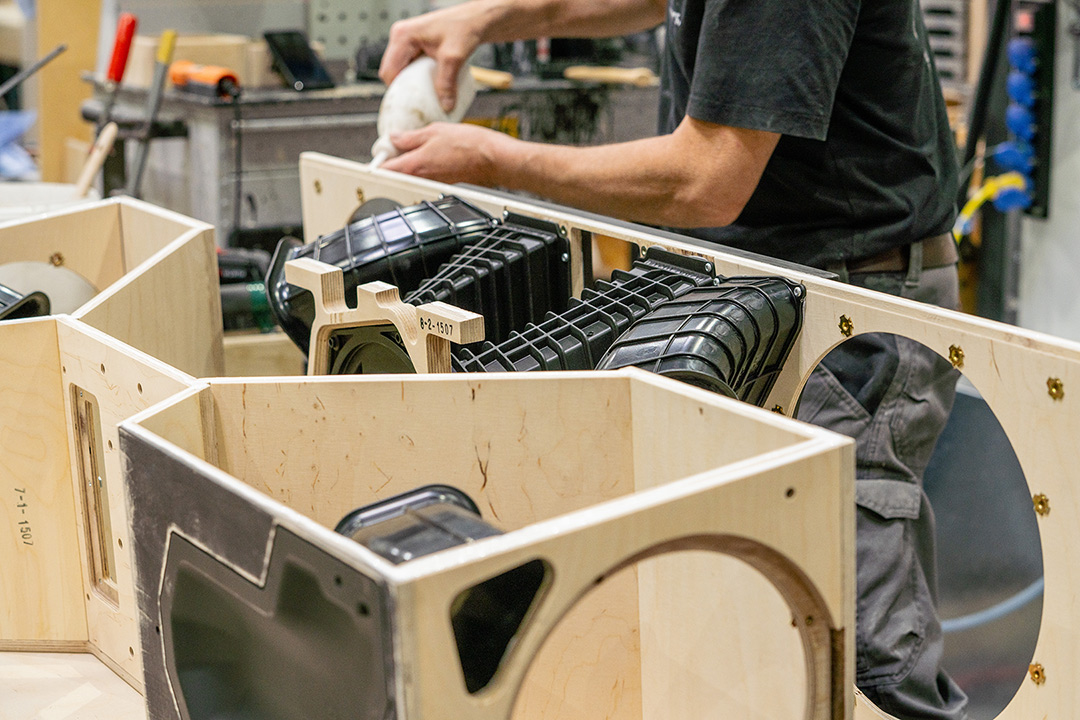
d&b loudspeakers are manufactured in Backnang. All the transducers used in the loudspeakers are tested upon arrival at the factory. Each model has a specific test jig.
The woofers are tested for maximum excursion, and all the transducers are tested for very narrow tolerances in frequency response. Any transducer failing the test is rejected from the assembly line.
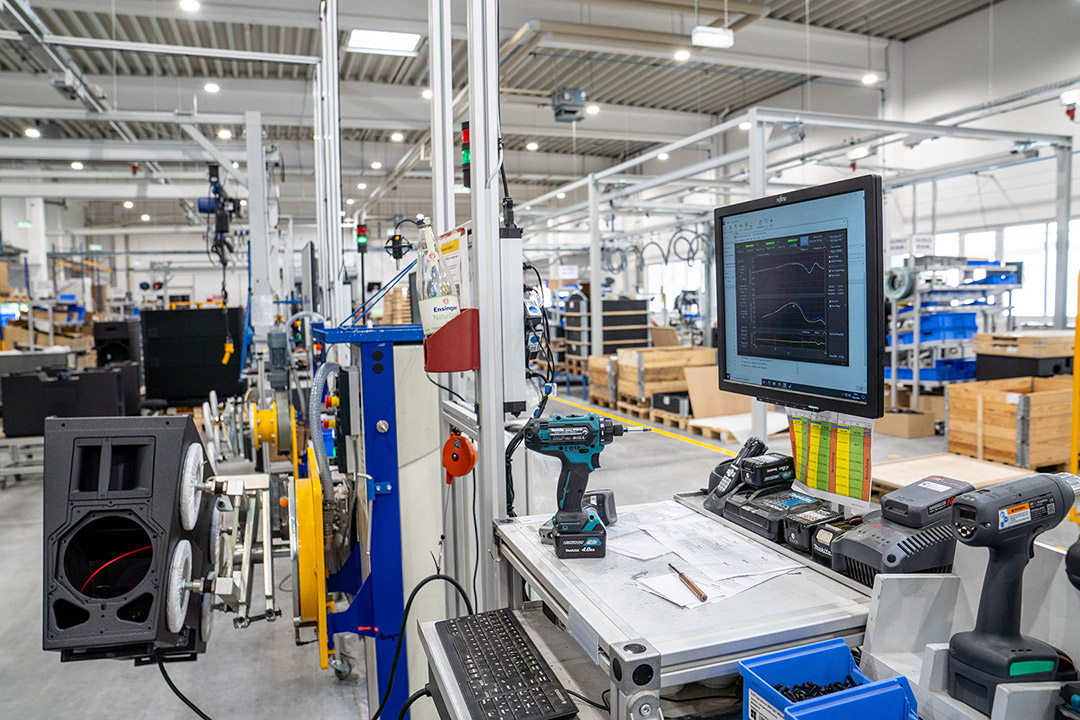
The paint booths can, of course, be customised for special colours or different versions, primarily for installation projects. Finishes are checked with the utmost care, and uniformity of paint is a must, because visible variations in the assembly of enclosures are out of the question.
Incubation chamber
And to wrap up our visit, we found ourselves in the immersive “incubation chamber”. This is where d&b carries out tests, configuration, training, and where the content for its immersive demonstrations is prepared. You will notice the inflatable acoustic diffusers on the ceiling. Here we meet Ralf Zuleeg, Director of Soundscape Enablement.
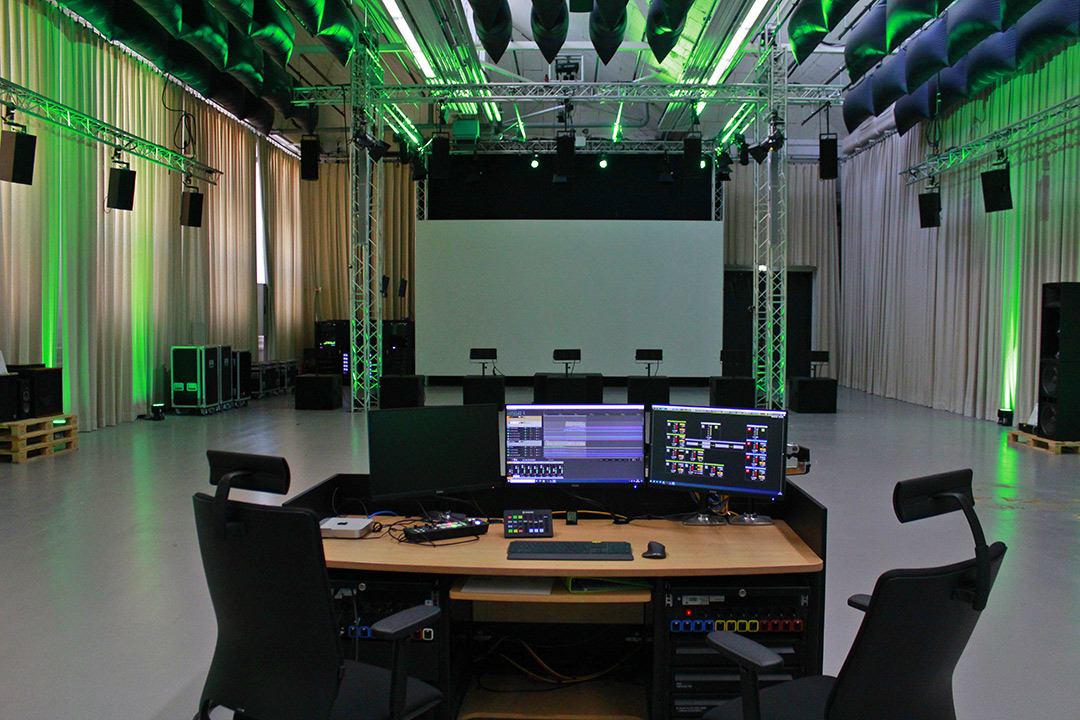
“Did you see the Meute concert yesterday? The group is constantly in motion. It creates acoustic images with different positions for the musicians. That’s impossible to do if you’re in mono or stereo. It is possible, however, with Soundscape.”
Ralf, who really knows his stuff, explains in simple terms why d&b started working on spatialised sound officially with Soundscape in 2018, but unofficially in 2013 in a club he was working in.
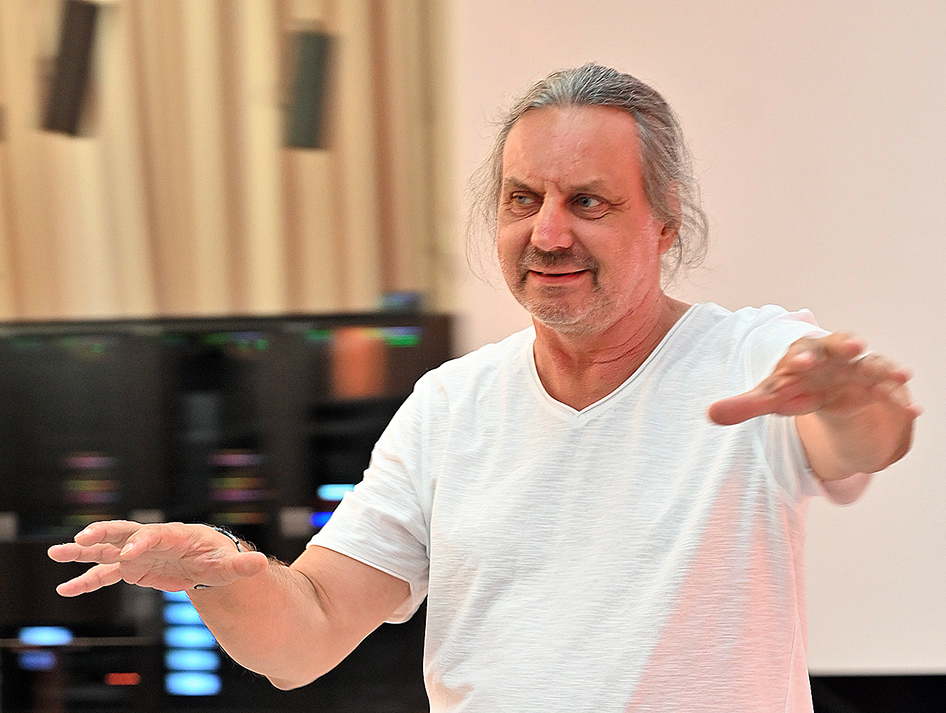
“This is reality. We don’t listen to the world in mono or stereo. Our world is made up of audio objects. When we go to the city or the countryside, we have a permanent 360-degree sound environment, and we know where we are all the time. It’s realistic.”
Obviously, when we talk about Soundscape and d&b, we immediately think of live applications. Another point that should not be underestimated is the significant improvement in intelligibility that a spatialised system provides.
“Imagine being in the European Parliament in Strasbourg. You’re in the hemicycle: 720 MEPs, and you’ve only got three speakers… When someone speaks, it takes you about 20 seconds to locate them and find out who’s speaking. In the meantime, your brain is so busy you can’t make out the words.”
Spatialised audio makes it easier to be heard. And above all, it’s less fatiguing for the listeners. These advantages are obviously very important in applications such as conferences, conventions, houses of worship and, more generally, permanent non-musical installations. “If you have a sound that comes from one place and its origin is somewhere else, the brain must work constantly to bring the two together. With spatialised sound reinforcement and object-based mixing, 100% of the audience will turn their heads towards you immediately and will be able to understand your entire message.”
The first live music deployment of Soundscape was for the 2013 Kraftwerk world tour. They were captivated by the creative possibilities the system offered. The system is also extremely well suited to musicals and theatre (note: see our article on Lido 2 Paris with immersive sound). The perfect localisation of the actors and the tracking of their movements enhance the audience’s experience of these shows.
Ralf concludes by reminding us of the importance of immersive technology, above and beyond audio.
“This year, immersive technology has made inroads into all the arts. Spatial audio, lighting, video. It’s now everywhere, and Soundscape represents an important part of this movement.” These sound objects can, of course, move around. For this, control solutions exist, such as En-Snap, which allow the Soundscape system to be controlled by external software like QLab or consoles like Lawo, SSL, Avid… other solutions also exist for recreating reverberant spaces. One such solution is En-Space.
“In addition to this, object mixing in a Soundscape system is extremely simple. The sound engineer will discover that he no longer needs to compress or correct heavily to enable the listener to hear a perfect mix of all the sound sources. There’s no reason to be afraid of mixing spatially, because it’s easy. Even easier than in stereo. And if he’s not brave enough to do it, he’ll miss out on something important. We do all this for the audience.”
The last word
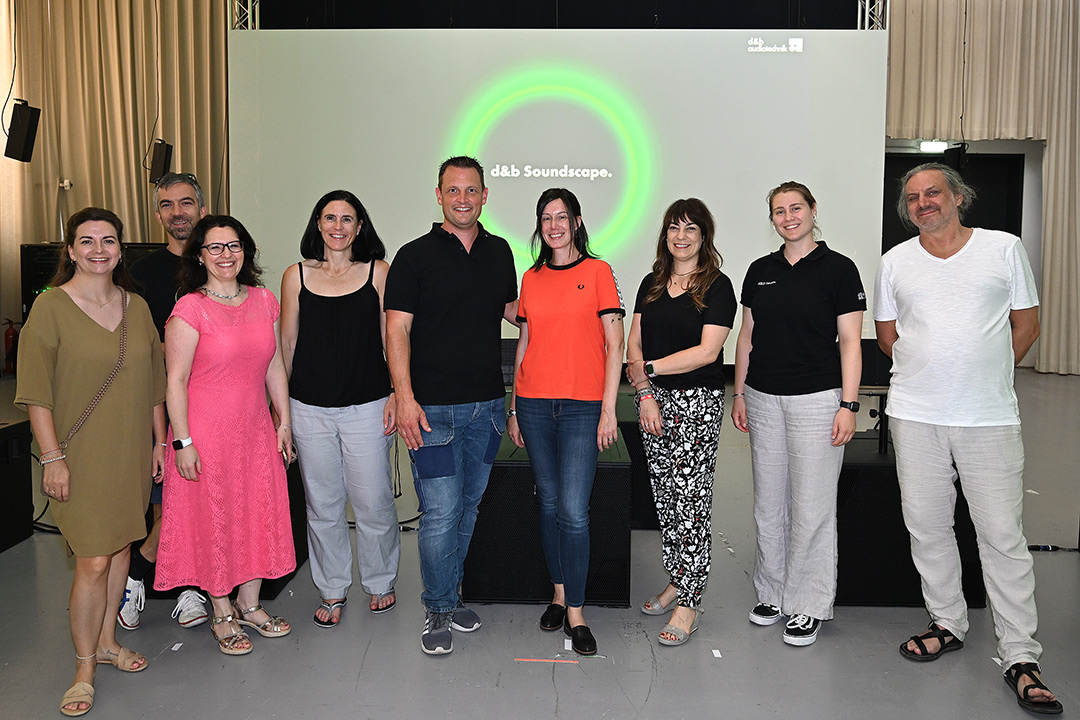
To conclude our full immersion in d&b, we leave the conclusion to Melanie Stegemann, Vice-President of Brand and Corporate Communications. “Our aim has always been to transform live experiences. We’ve gone from being a speaker manufacturer to an audio technology manufacturer, and now, with the arrival of Soundscape, we’re becoming a multi-sensory experience manufacturer.
“The d&b group includes partners who enable us to better understand what our customers need. The next step is to capture, replicate and distribute these live experiences worldwide. This means not only being present at an event, but also ‘experiencing’ it at another location in the world. That’s what our immersive business unit is working on…”
Follow these links for more information on d&b and on SustainSymphony



